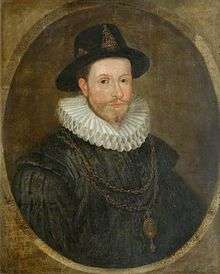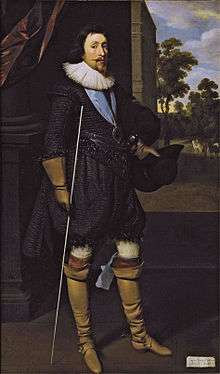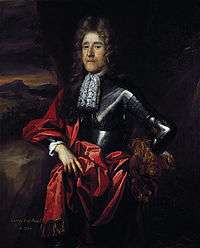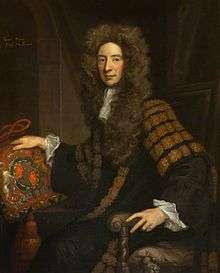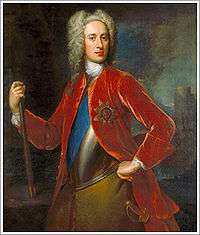Lord High Commissioner to the Parliament of Scotland
The Lord High Commissioners to the Parliament of Scotland, sometimes referred to as the fifth estate of the Estates of Scotland, were the Scottish Sovereign's personal representative to the Parliament of Scotland following James VI of Scotland's accession to the throne of England and his becoming, in personal union, James I, the first Stuart king of England (see Union of the Crowns).
The Lord High Commissioners were appointed from 1603 until 1707. The Act of Union 1707, which merged the Parliament of Scotland and the Parliament of England to create the Parliament of Great Britain, rendered the post redundant.
They were effectively the heads of government in Scotland during this period,[1] exercising de facto control over the Estates and the Privy Council, although nominally this role was still held by the Lord Chancellor.
List of Lord High Commissioners
References
- ↑ "a personal representative of the Sovereign, Lords High Commissioner were appointed to the Scottish Parliament between the Union of the Crowns (1603) and the Act of Union (1707) and were the heads of government in Scotland.". Gazetteer for Scotland, University of Edinburgh. Retrieved 1 March 2010.
See also
- Commissioner (Scottish Parliament)
- Lord High Commissioner to the General Assembly of the Church of Scotland

